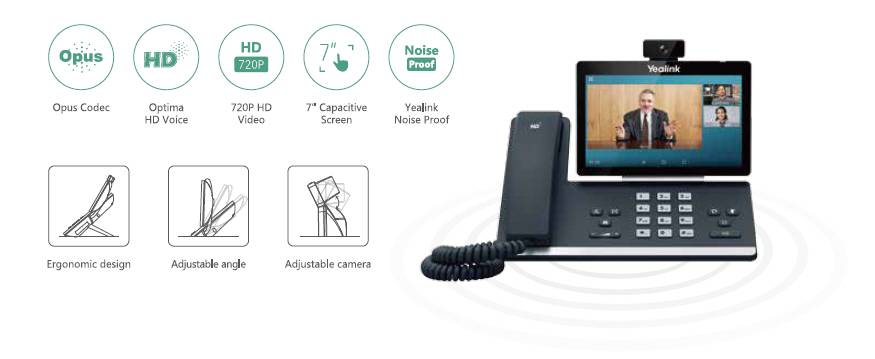Introduction
In today’s fast-paced world, maintaining efficient communication is crucial for any organization, especially nonprofits. For those in Oregon striving to make a difference, selecting the right VoIP (Voice over Internet Protocol) phone system can be a game changer. But how do you navigate the myriad options available? This article will guide you through the ins and outs of choosing the perfect VoIP phone system tailored to your nonprofit's unique needs.
Table of Contents
Understanding VoIP Technology- What is VoIP? Advantages of Using VoIP Phones
- Key Features to Consider Understanding Call Volume and Patterns
- Cost Factors Involved Comparing Pricing Models
- Major Players in the Market Local vs. National Providers
- Essential Features for Efficiency Optional Features to Enhance Communication
- Compatibility with Other Software Importance of Seamless Integration
- Onboarding Staff and Volunteers Ongoing Support and Resources
- Steps to Rollout Your New System Ensuring Smooth Transition
- What is the best VoIP phone system for nonprofits? How much does a typical VoIP system cost? Can I use my existing phones with a new VoIP system? Is internet speed important for VoIP calls? Are there any hidden fees with VoIP providers? How do I ensure security with my new phone system?
Understanding VoIP Technology
What is VoIP?
Voice over Internet Protocol, or VoIP, is a technology that allows you to make voice calls using an internet connection instead of traditional telephone lines. This means you can communicate through your broadband connection—your computer, smartphone, or even special phones designed just for this purpose.
Advantages of Using VoIP Phones
VoIP phones bring several advantages to the table:
- Cost Savings: Generally cheaper than traditional landlines. Flexibility: Allows remote work; employees can take calls from anywhere. Advanced Features: Often includes features like voicemail-to-email, call forwarding, and video conferencing at no extra charge.
Nonprofits in Oregon can particularly benefit from these features as they often operate on limited budgets but require robust communication solutions.
Assessing Your Nonprofit's Needs
Key Features to Consider
When choosing a VoIP phone system, consider features like:
- Call routing Auto-attendant Conference calling capabilities Mobile app availability
These features ensure smooth operation and enhance both internal collaboration and external communication.
Understanding Call Volume and Patterns
Before making any decisions, analyze your organization’s typical call volume and patterns.
- Do you have high call traffic during certain hours? Are many calls made locally or internationally?
This understanding will help tailor your choice effectively.
Budgeting for a VoIP System
Cost Factors Involved
soundcurve.com VoIP Phones in PhilomathBudget is always a key consideration! Here are some costs associated with implementing a new system:
Monthly subscription fees Equipment costs (phones, headsets) Installation fees (if applicable) Maintenance costsMake sure to account for these when planning your budget.
Comparing Pricing Models
Different providers offer different pricing models—some charge per user while others may offer flat rates for unlimited use.
| Provider | Pricing Model | Estimated Monthly Cost | |----------|---------------|-----------------------| | Provider A | Per User | $20/user | | Provider B | Flat Rate | $300/month |
Compare these models carefully based on your organization's size and calling needs.
Researching VoIP Providers
Major Players in the Market
There are numerous players in the world of VoIP systems—some trusted names include:
RingCentral Zoom NextivaResearch their offerings thoroughly to find one that aligns with your nonprofit's needs.
Local vs. National Providers
While national providers may offer more features, local providers might give you better customer service tailored specifically for Oregon-based organizations.
VoIP Features That Matter for Nonprofits
Essential Features for Efficiency
Some must-have features include:
- Call recording: Useful for training purposes. Real-time analytics: Helps evaluate performance. Integration options: Essential if you use CRM tools or other software platforms.
Optional Features to Enhance Communication
Consider adding optional features such as:
- Video conferencing: Perfect for remote meetings. Team messaging apps: Keeps everyone connected without making calls all day long!
These add-ons can significantly improve communication within your team.
Integration with Existing Systems
Compatibility with Other Software
One critical aspect to check is how well the chosen phone system integrates with existing software like CRMs or project management tools.
Importance of Seamless Integration
A seamless integration ensures that data flows smoothly between systems—this means less manual entry and reduced errors!
User Experience and Training
Onboarding Staff and Volunteers
Training staff on how to use a new phone system is essential! Schedule sessions where users can learn about basic functions like placing calls or transferring them seamlessly.
Ongoing Support and Resources
Assess what ongoing support services are provided by your chosen provider—will they be available 24/7? This support can be invaluable as issues arise down the road.
Testing and Implementation Process
Steps to Rollout Your New System
Implementing a new VOiP system requires careful planning:
Set clear objectives. Train users before going live. Conduct testing phases before full rollout. Collect feedback during early usage days!Following these steps will ensure minimal disruption during transition times!
Ensuring Smooth Transition
Communicate clearly about changes so everyone knows what’s happening—and don’t hesitate about seeking help from IT professionals if needed during setup!
How to Choose the Right VoIP Phone System for Your Oregon Nonprofit
Choosing the right system involves evaluating multiple factors including budget constraints, necessary features, provider reliability & support availability tailored specifically towards nonprofits operating within Oregon state boundaries! It’s about finding balance among affordability while ensuring optimal functionality meets organizational goals effectively!

Take time researching options available out there before finalizing anything; remember this isn’t just another purchase—it’s an investment into future growth potentiality!
Frequently Asked Questions (FAQs)
What is the best VoIP phone system for nonprofits?
The best VoIP phone system varies by need but popular choices include RingCentral, Nextiva, and Grasshopper due their affordable pricing structures paired along with essential feature sets tailored towards nonprofits specifically!
How much does a typical VoIP system cost?
Costs fluctuate based on size & requirements; however expect average monthly fees ranging anywhere from $15-$40 per user depending upon selected functionalities integrated into plan itself!
Can I use my existing phones with a new VoIP system?
In most cases yes—many systems allow utilization of existing hardware though be sure check compatibility beforehand so no surprises arise later down line!

Is internet speed important for VoIP calls?
Absolutely! A stable internet connection ensures quality call performance; aim minimum download/upload speeds around 1 Mbps per simultaneous conversation desired without issues occurring during usage periods when possible !
Are there any hidden fees with VoIP providers?
It’s wise scrutinize contracts closely before signing anything since some companies impose additional charges like equipment leases/setup fees etc., thus read fine print thoroughly throughout process itself carefully here too!
How do I ensure security with my new phone system?
Look into providers who prioritize cybersecurity measures including encryption protocols plus regular software updates ensuring protection against potential breaches occurring routinely over time!
Conclusion
Choosing how pick right VOiP Phone System suitable match specific needs unique non-profit living within beautiful state Oregon doesn't need feel overwhelming when approached strategically utilizing outlined guidelines covered earlier here today! Take time assessing various aspects & factors influencing decision-making processes ultimately resulting successful implementation journey yielding fruitful outcomes benefitting all involved parties alike moving forward together into brighter horizons ahead!
In summary—communication remains cornerstone effective operations overall success within any organization regardless its size scope therefore invest wisely aligning choices accordingly towards achieving desired results effectively across board each step taken along way leading towards reaching ultimate goals envisioned initially beforehand ultimately too together collaboratively working hand-in-hand completing missions successfully achieved fulfilling aspirations held dear always forevermore!